Reserch & Development
Thermal spraying
Thermal spraying is a surface modification technology in which metals and ceramics are heated to a molten or semi-molten state and then made to collide with and accumulate on the surface of a substrate thereby forming a coating.
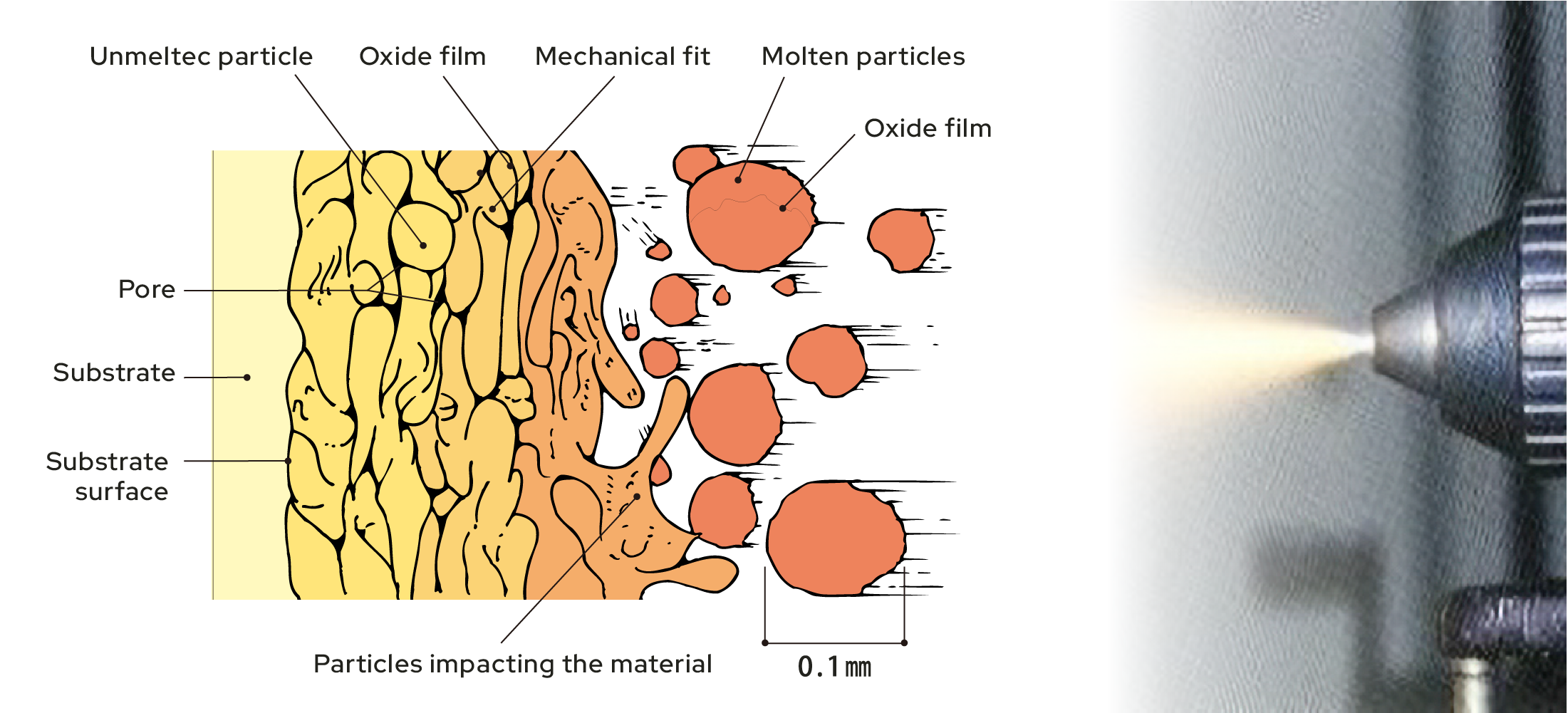
Thermal spraying means to cause a molten material to collide with and accumulate on the surface of a substrate. Accordingly, in order to create a good thermal spray coating, a high-temperature state to create a sufficient molten state and a high-speed state to spray particles are required. In the film-creation process in thermal spraying, molten particles collide with the substrate and simultaneously become flattened. Some particles become a spray and are scattered. Particles of the raw material that have melted and become a liquid, build up rapidly to form a film.
Various Thermal spraying Methods
Water plasma spraying
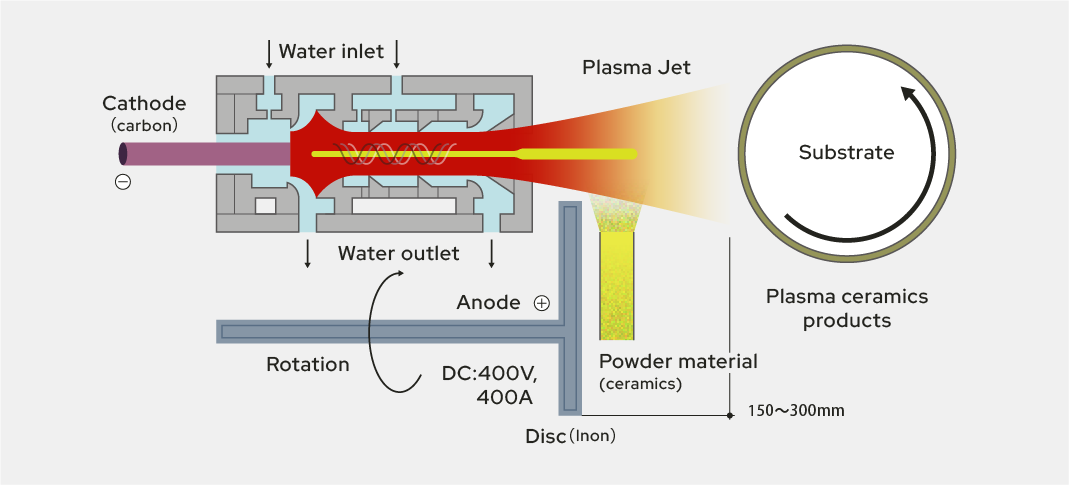
Gas plasma spraying
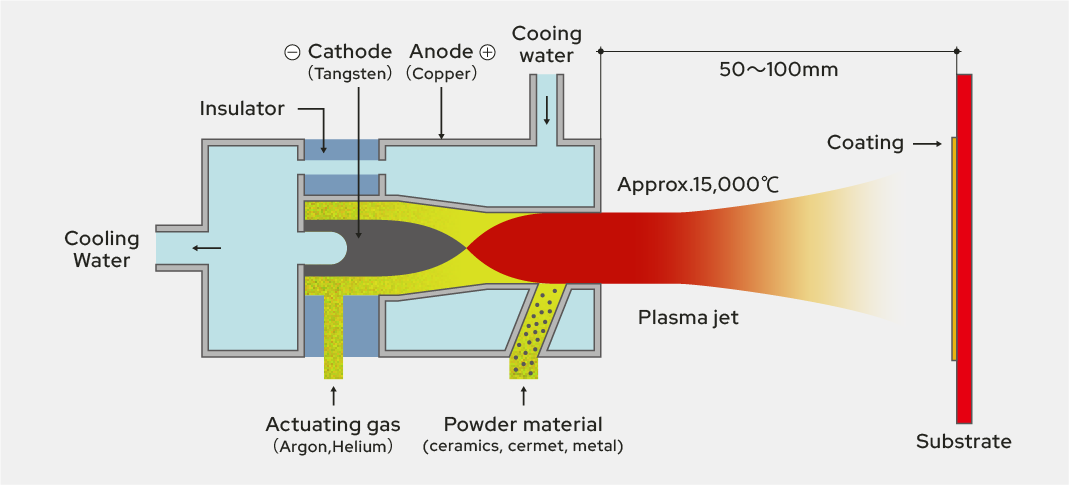
High-velocity oxygen fuel spraying
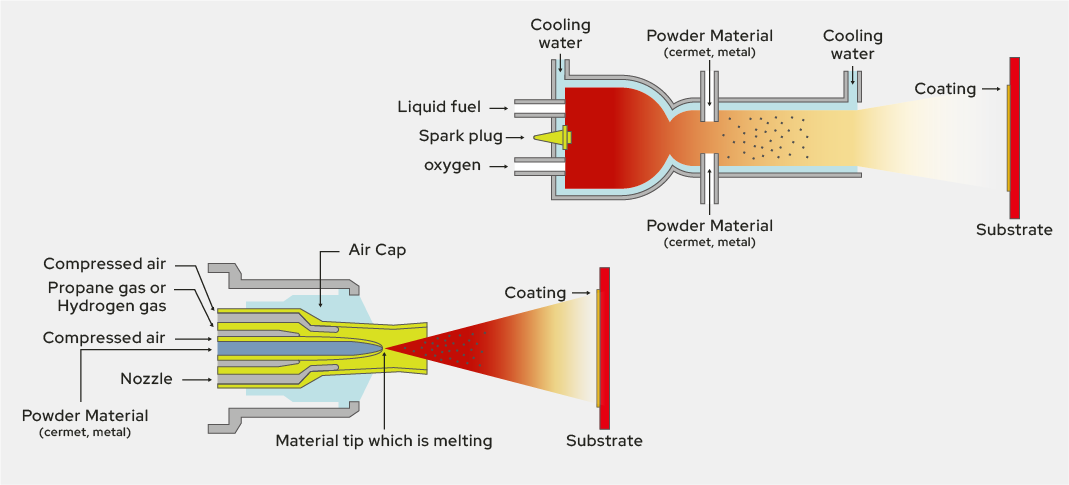
Arc spraying
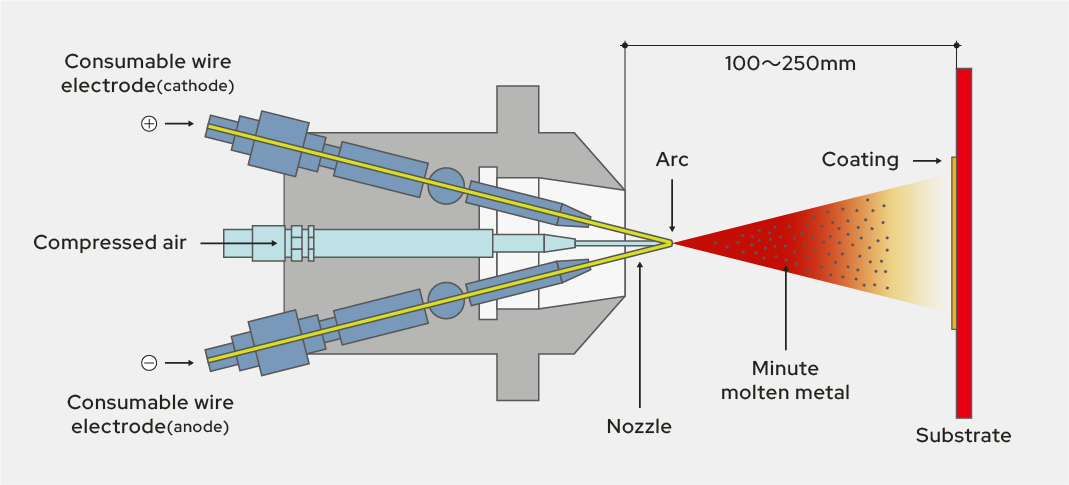
Flame spraying
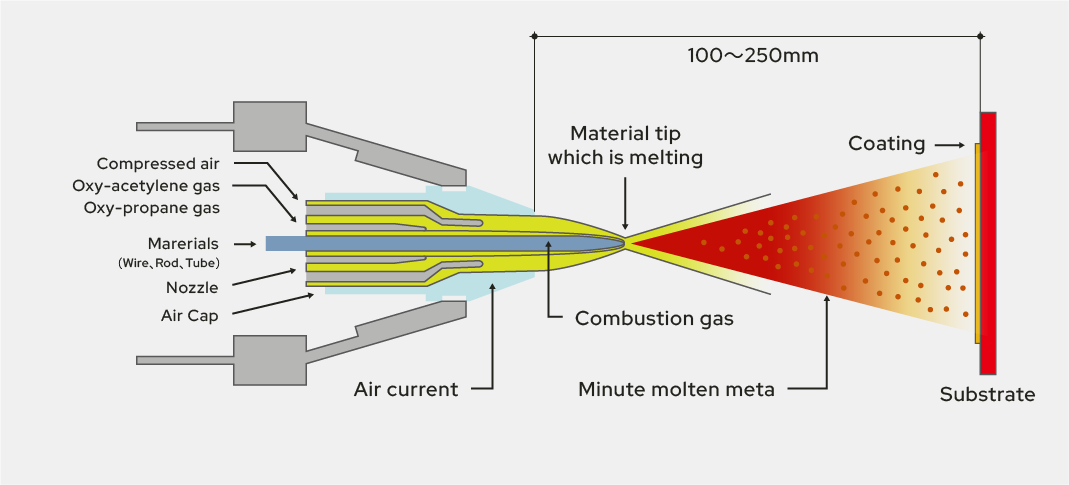
Characteristics of Thermal spraying Methods
Thermal spraying, which involves the unique process of melting and projecting a solid feedstock, has characteristics that are unlike other surface modification technologies. This section provides descriptions of various surface modification technologies including thermal spraying.
Comparison of surface modification technologies
| Method | Coating materials | Substrate materials | Degree of adhesion |
|---|---|---|---|
| Thermal spraying | Metals, alloys, ceramics, plastics, glass, Cermet |
Metals, ceramics, plastics, wood, paper products |
Excellent |
| Plating | Metals, alloys | Materials that cannot be soaked in the plating solution |
Good |
| CVD (Chemical Vapor Deposition) |
Heat-resistant metals, ceramics, sulfides, selenium compounds, and others |
Materials capable of withstanding 500~2000℃and chemical corrosion by deposits |
Good |
| Vacuum deposition | Pure metals, alloys, compounds |
Any non-gas-emitting surface | Good Good when substrate heated. Excellent when substrate sputtered. |
| Ion plating | Pure metals, alloys, carbides, nitrides, oxides |
Same as above | Excellent |
Advantages and Disadvantages of thermal spraying
Advantages of thermal spraying
- Wide selection of spray materials.
- Wide selection of substrate materials.
- Speed of coating formation is fast.
- Wide range of substrate dimensions.
- On-site work possible.
- Coating can be formed while keeping substrate at low temperature.
- Spraying is a dry process so environmental impact is low.
Disadvantages of thermal spraying
- Thermal spray coating does not always indicate the characteristics of the original material.
- Thick coatings are difficult to achieve.
- Low degree of adhesion (spray efficiency) on small substrates and substrates with small curvature.
- The coating formation process is not sufficiently clear and the relationship between the causes (parameters) of the application process and coating characteristics is also unexplained.
- There is no evaluation method (testing method) for assessing how well the coating has adhered to the substrate.
- Requires measures to combat noise, light, dust, fumes, and other issues.




